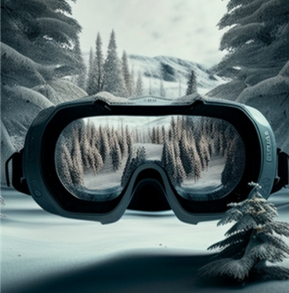When considering if a new emerging technology, such as virtual reality (VR), would be a right tool to use in a certain educational situation, one should always think about the specific need.
People usually refer to virtual reality (VR) as a 3D environment that is experienced with the VR headset. It can also be understood as a virtual gamified learning environment, a simulation or 360 content that can be used with the laptop or mobile device. According to Helsinki XR Center´s good glossary and definitions:
VR can mimic reality or be something totally different.
Sometimes other type of media like a video is more powerful, sometimes not. To sum up when VR could be used, teachers could think about the following. If something is not possible in the classroom or with traditional EdTech and online learning tools, then maybe that is possible in VR because:
VR can make impossible possible.
Here is a list of some of the identified benefits of virtual reality as a learning technology:
- You can travel in time, back and forth. This allows learners to be uniquely immersed in different kinds of future scenarios too.
- You can travel in place. A teacher can take the class into space or they can live someone else´s life on the other side of the world.
- You can travel in size. A learner can make big things small and vice versa. It is possible to observe the objects that otherwise would be impossible, like travel inside a cell or a volcano.
- The complex cause-and-effect relations are easier to understand when seeing the consequences in front of you. What a learner does in VR is affecting to the end result.
- You can change the perspective and learn empathy. Probably one of the most important benefits of VR is the possibility to see the world from someone else´s eyes. When you imagine the world from another person´s point of view, the gap between oneself and the other decreases and the other becomes more “self like”. This way, VR helps to avoid stereotypes and false or comforting narratives. The research has found out that VR experiences in perspective-taking are especially powerful for people who in general have a hard time feeling concern for others and be empathetic. (Bailenson, 2018)
- You can explore your identity. Immersion is important in identity exploration because virtual identity doesn´t need to worry about the physical attributes such as gender, race, and disabilities. (Slater, 2009 in Dede et al, 2019). In a virtual world, you can be anyone.
A learning theory that is often referred in relation to VR is situated learning or transferability. Transferability is also one of the key learning design principles defined by OECD (2018). Higher priority should be given to knowledge, skills, attitudes, and values that can be learned in one context and transferred to others. A major criticism of instruction today is the low rate of transfer. Even high performing students often are unable to apply what they have learned in the class to similar real-world contexts (Dede et al, 2019). With virtual reality it is easier to create authentic learning experiences and simulations that feel like real.

When thinking about the virtual reality and other immersive tools as an educational technology, a teacher can think about the use cases through the following questions:
- What is the most difficult thing to teach?
- What is expensive?
- What needs to be scaled?
- What is the most important thing to teach?
VR applications are perfect tools for immersive experiences. Immersion is described as the mental state of being completely engaged with something. When learners have a safe space where they can explore things and try if their strategies are efficient, they can take more risks too. When being fully immersed in the virtual world, learners can be so motivated to learn more and are interacting with the content even deeper so that they can even reach the “flow”. That means that they can lose everything else around, even their sense of time (Csikszenthmihalyi, 2014). The educators can also think about the level of immersion they are aiming at – we also have great semi-immersive environments to use like 360 pictures or videos.
We encourage teachers to test and try the possibilities of virtual reality in education. We are excited to hear the use cases you have found and are happy help the teachers at the University of Helsinki to experiment different kind of virtual technologies.

References:
- Bailenson, J. (2008). Experience on Demand. What Virtual Reality Is, How It Works, and What It Can Do.
- Csikszentmihalyi, M. (2014). Flow and the foundations of positive psychology.
- Dede, C. G. (2019). Designing immersive authentic simulations that enhance motivation and learning: EcoLearn. In R. Feldman (Ed.), Learning science: Theory, research, practice. (pp. 229-259). New York: McGraw Hill.
- OECD. (2018). The Future of Education and Skills. Education 2030.
- Slater, M. (2009). Place Illusion and Plausibility can lead to realistic behaviour in immersive virtual environments. Philos Trans R Soc Lond, 364, 3549‐3557.
